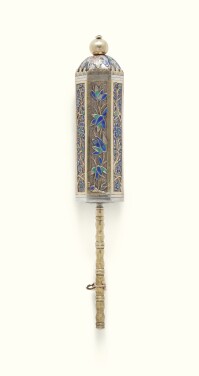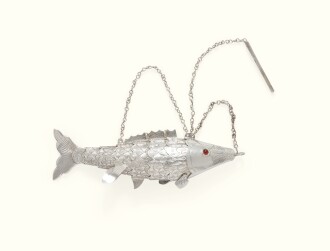
W ith the signing of the Treaty of Nanking in 1842, which ended the First Opium War and established the right of foreigners to trade at five Chinese ports, David Sassoon recognized an opportunity to expand his commercial activities into the Far East. For this purpose, in 1844 he sent his second son, Elias (1820-1880), to Canton (present-day Guangzhou, China). A savvy businessman, Elias would go on to found successful branches of his father’s company in Hong Kong, Shanghai, and elsewhere. Over the years, his brothers Sassoon, Albert, Reuben, Arthur, and particularly Solomon and Frederick all did stints of varying lengths in the Far East as well, allowing the firm to extend its reach to Rangoon (present-day Yangon, Myanmar), Singapore, Yokohama, Nagasaki, and Kobe.
As mentioned previously, when David Sassoon passed away in 1864, Albert and Elias assumed control of the business, but their shares were unequal. Because of these and other tensions between the brothers, Elias broke away from David Sasson & Co. and in 1867 founded E.D. Sassoon & Co., also based in Bombay. At first focused on less profitable goods like tea, spices, camphor, fruits, nankeen, silk, and metals, the firm eventually competed in the opium and cotton trades. Elias’ son Jacob (1844-1916) traveled to China to open branches of his father’s new rival company in many of the same cities in which his uncles operated. While Jacob would eventually return to live in Bombay (and be made a baronet in 1909), he maintained close connections with the cities in which he had worked, building a synagogue (Ohel Leah, in memory of his mother) in Hong Kong in 1883 and another (Ohel Rachel, in memory of his wife) in Shanghai in 1920 (completed posthumously).

After Sir Jacob’s death, his younger brothers Sir Edward (1853-1924) and Meyer Harry (1875-1924) diversified the company’s activities by investing in luxury real estate in Shanghai. In March 1930, Sir Edward’s son Sir Ellice Victor (1881-1961) relocated the headquarters of E.D. Sassoon & Co. to the newly-constructed ten-story Sassoon House in Shanghai (today, the North Building of the famous Peace Hotel), from which he ran his growing real estate empire. With the rise of Communism, however, Shanghai lost its appeal as a base of operations, and so in 1950 the firm sold its Chinese interests and moved to Nassau in the Bahamas. Though some Sassoons continue to this day to live and work in places like Singapore, much of the family’s former involvement in Far Eastern commerce has attenuated.







